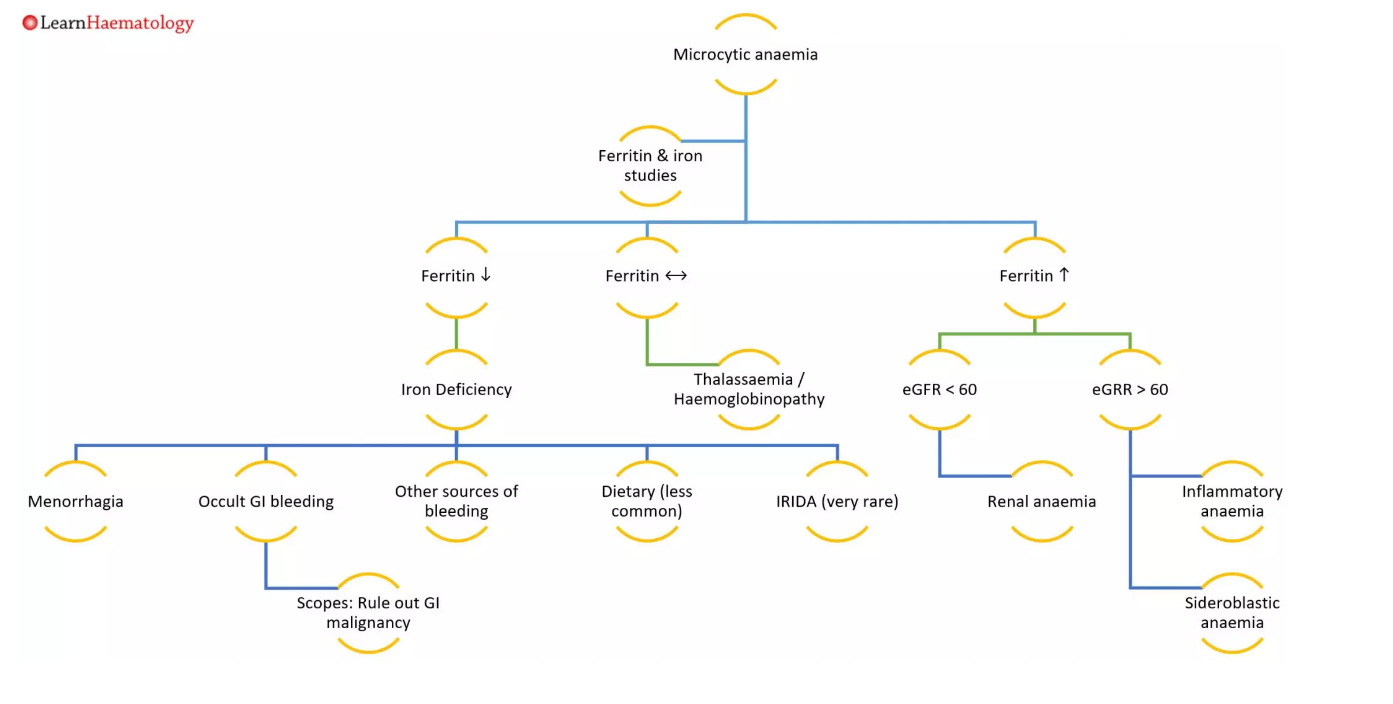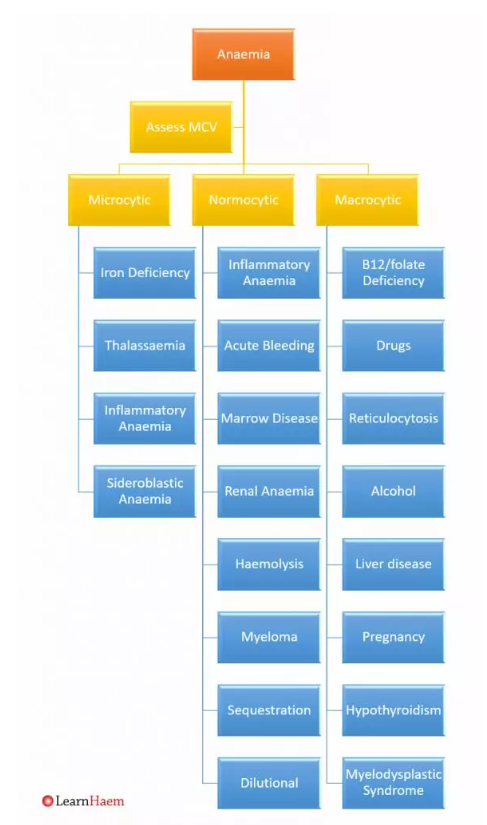Approach to Microcytosis.
Serum Ferritin levels (The Iron Storage Protein )
Iron studies
Haemoglobin Electrophoresis
Serum ferritin is the first-line test for a microcytic anaemia,
with or without other iron studies.
This will identify iron deficiency,
one of the most common causes of microcytosis.
If the serum ferritin is normal, consider haemoglobin electrophoresis
to identify thalassaemias or variant haemoglobins.
If the serum ferritin is high,
The anaemia is usually the result of a chronic inflammatory process.
In very rare instances, it may be the result of an iron-loading anaemia
(e.g. congenital sideroblastic anaemias, thalassaemia major or sickle cell disease).
IRIDA: iron-refractory iron-deficiency anaemia,
an extremely rare condition characterised by an inability to absorb enteric iron.

Approach to Microcytosis
Microcytosis the term given to describe red blood cells which are smaller than their normal counterparts.
The normal RBC diameter is approximately 8µm.
Iron deficiency is one of the most common causes of microcytosis.
The approach to microcytosis is shown below
Microcytic
Anaemia is described as microcytic when the MCV is < 82 fL.
Microcytic anaemia is commonly associated with a reduction in the mean corpuscular haemoglobin concentration (MCHC), which leads to the appearance of pale (hypochromic) RBCs.
The most common cause of microcytic anaemia is iron-deficiency anaemia (IDA).
This may be evaluated with
iron studies (transferrin and serum iron)
and serum ferritin.
Other important causes of microcytic anaemia include:
- Anaemia of chronic disease (predominantly causes normocytic anaemia)
- Thalassaemia
- Other haemoglobinopathies
- Lead poisoning
- Sideroblastic anaemia





